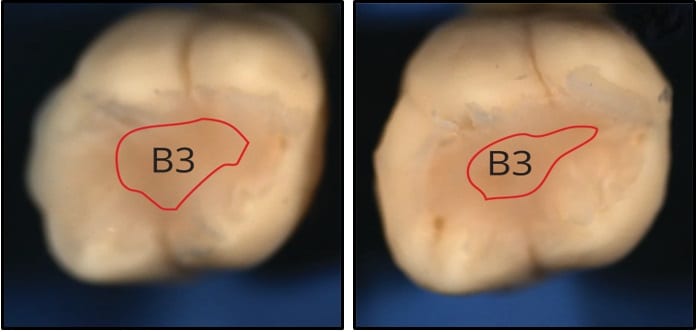There is hardly a human being on earth who doesn’t suffer from tooth decay, which is among the costliest and most widespread bacterial diseases. Virulent bacteria cause the acidification of tooth enamel and dentin, which, in turn, causes secondary caries.
Now researchers at Tel Aviv University offer hope that cavities can be conquered. They developed novel dental restorative (filling) materials with potent antibacterial capabilities. The research was recently published in the journal ACS Applied Materials and Interfaces
According to the research, the resin-based composites – with the addition of antibacterial nano-assemblies – can hinder bacterial growth and viability on dental restorations, which are the main cause of recurrent cavities that can eventually lead to root canal treatment and tooth extractions.
Research for the study was led by Dr. Lihi Adler-Abramovich and doctoral student Lee Schnaider in collaboration with Prof. Ehud Gazit, Prof. Rafi Pilo, Prof. Tamar Brosh, Dr. Rachel Sarig and colleagues from Tel Aviv University’s Maurice and Gabriela Goldschleger School of Dental Medicine and George S. Wise Faculty of Life Sciences.
“Antibiotic resistance is now one of the most pressing healthcare problems facing society, and the development of novel antimicrobial therapeutics and biomedical materials represents an urgent unmet need,” noted Adler-Abramovich. “When bacteria accumulate on the tooth surface, they ultimately dissolve the hard tissues of the teeth. Recurrent cavities at the margins of dental restorations results from acid production by cavity-causing bacteria that reside in the restoration-tooth interface.”
This disease is a major causative factor for dental restorative material failure and affects an estimated 100 million patients a year, at an estimated cost of over $30 billion.
Historically, amalgam fillings composed of metal alloys were used for dental restorations and had some antibacterial effect. But because of the alloys’ bold metallic color, the potential toxicity of mercury and the lack of adhesion to the tooth, new restorative materials based on composite resins were preferred for treatment. But unfortunately, the lack of an antimicrobial property remained a major drawback to their use.
“We’ve developed an enhanced material that is not only aesthetically pleasing and mechanically rigid but is also intrinsically antibacterial due to the incorporation of antibacterial nano-assemblies,” Schnaider explained. “Resin composite fillings that display bacterial inhibitory activity have the potential to substantially hinder the development of this widespread oral disease.”
The scientists are the first to discover the potent antibacterial activity of the self-assembling building block Fmoc-pentafluoro-L-phenylalanine, which is comprised of both functional and structural subparts. Once the researchers established the antibacterial capabilities of this building block, they developed methods for incorporating the nano-assemblies within dental composite restoratives.
Finally, they evaluated the antibacterial capabilities of composite restoratives incorporated with nanostructures as well as their biocompatibility, mechanical strength and optical properties.
“This work is a good example of the ways in which biophysical nanoscale characteristics affect the development of an enhanced biomedical material on a much larger scale,” Schnaider said.
“The minimal nature of the antibacterial building block, along with its high purity, low cost, ease of embedment within resin-based materials and biocompatibility, allows for the easy scale-up of this approach towards the development of clinically available enhanced antibacterial resin composite restoratives,” Adler-Abramovich concluded.
The researchers are now evaluating the antibacterial capabilities of additional minimal self-assembling building blocks and developing methods for their incorporation into various biomedical materials, such as wound dressings and tissue scaffolds.



